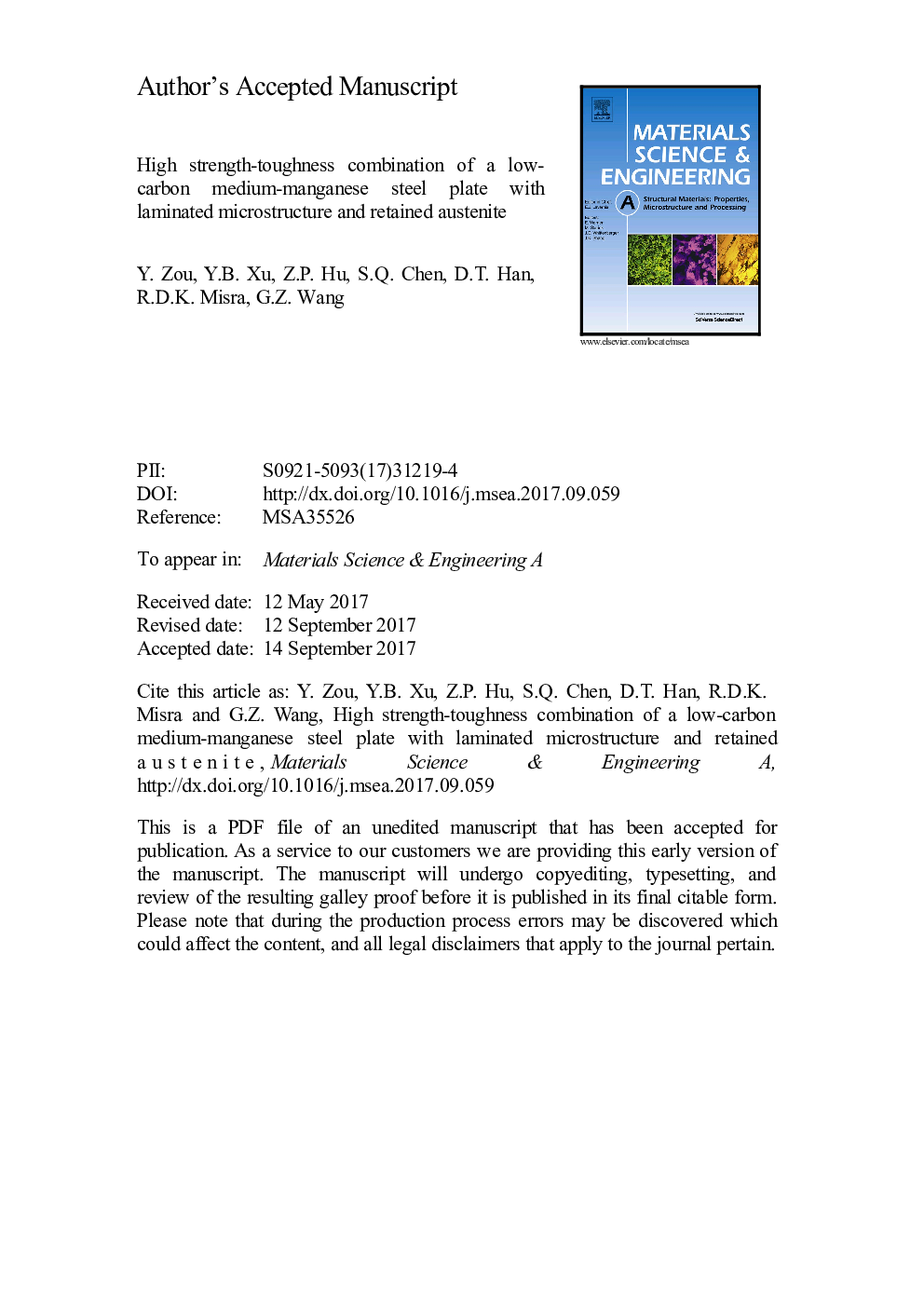| Article ID | Journal | Published Year | Pages | File Type |
|---|---|---|---|---|
| 5455233 | Materials Science and Engineering: A | 2017 | 31 Pages |
Abstract
Three different grain structures of low-carbon medium-manganese steel were prepared through appropriate controlled rolling process. The laminated microstructure with a strong <110>//rolling direction (RD) fiber texture was characterized by ultra-fine elongated ferrite, retained austenite and martensite phase arranged alternately along the RD. The steel with equiaxed grain structure exhibited a relatively low tensile strength of 960 MPa and an extremely poor low-temperature toughness of ~ 8 J at â196 °C. An enhanced upper shelf energy (> 450 J) and low-temperature toughness (~ 105 J at â196 °C), as well as an improved tensile strength (1145 MPa) was obtained in the steel with laminated microstructure. The laminated microstructure enabled the steel to be significantly stronger and tougher along the RD, which contributed to the high tensile strength to some extent. It is concluded that the combined effect of the ultra-fine elongated laminated microstructure, the possible interface decohesion and the existence of numerous {001} cleavage planes resulted in the occurrence of delamination. The delamination fracture enhanced the upper shelf energy mainly by promoting crack branching along the RD and thus suppressing crack propagation along the v-notch direction, which finally resulted in greater plastic deformation and significant increase in absorbed energy. Besides delamination toughening, transformation-induced plasticity (TRIP) effect of metastable retained austenite is believed to be responsible for the high cryogenic toughness, which can release stress concentration of crack tips and thus blunting cracks propagation.
Related Topics
Physical Sciences and Engineering
Materials Science
Materials Science (General)
Authors
Y. Zou, Y.B. Xu, Z.P. Hu, S.Q. Chen, D.T. Han, R.D.K. Misra, G.Z. Wang,
